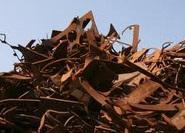Scrap Prices North America

Miller on scrap: 2023 in review
Written by Stephen Miller
December 20, 2023
As we look back at the scrap market for 2023, it basically followed its normal seasonal pattern. Most of the disruptive geopolitical events that riled ferrous raw materials occurred in 2022. So, with those things out of the way—or settling down at least for now—2023 resumed its normal pattern. Ferrous scrap rose in Q1 from the lower prices we saw in Q4’22. It peaked in April as scrap flows recovered from winter hibernation.
After April, prices started their slow and steady decline for the next six months, except for a brief rise for shredded in June. The price drop ended in October with prime scrap still falling and obsolescent grades trading sideways. After this, the market rose with emphasis on prime grades, largely due the automotive strike and increased mill demand after several outages in Q3 and Q4. Prices for imported pig iron bottomed in October, and this had a bullish effect on scrap prices, as prime grades rallied well over $120 per gross ton (gt).
Looking ahead to 2024
The market for January appears to be firm to up. However, dealers and brokers seem to be split on their forecasts. SMU reached out to a long-time industry veteran, Ray Peterson of Memorial Resource Group. Peterson is wary of the bullish position for January. He said the extreme rise in #1 Busheling, which ranged from $60-100/gt, may be enough to force the market sideways. Obsolescent grades could rise since they did not receive the increases similar to busheling. He went on to say, “logistics have been a problem for scrap for a long time.” He noted many dealers have experienced trucking shortages. Some dealers are saying they have material but can’t get enough trucks to ship it to the mills. If this situation persists in January, both prime and obsolete grades could continue their ascent.
Others disagree the markets for January will be sideways. SMU spoke with a dealer/broker in the Chicago area. He said “the dealers smell blood in the water” after last month’s wild ride of busheling purchases. This source believes prime grades in the Chicago/Detroit districts will advance by $30/gt, with secondary grades advancing by $20. Dealers have seen hot-rolled coil (HRC) approaching the $1,100 per net ton (nt) mark, and they believe this gives room for scrap to rise. He said the operating rates are likely to increase, thereby creating a demand-pull market with a supply-push situation already in full swing.
SMU asked a steel mill executive what he sees ahead for the next month and Q1’24. He said his company is experiencing firmness in all ferrous raw materials. Looking ahead, the climate for steel sales is encouraging, with lower interest rates and the prospect of continuing economic growth.
Whatever does happen to the scrap market, it will wait until after the holidays. Our scrap radar will be up and humming then.

Stephen Miller
Read more from Stephen MillerLatest in Scrap Prices North America

HRC vs. scrap spread widens over $150/ton in March
The HRC vs. prime scrap spread increased again in March.

HRC vs. prime scrap spread increases in February
The price spread between hot-rolled coil (HRC) and prime scrap widened in February ahead of the implementation of President Trump’s tariffs on steel.
HRC vs. prime scrap spread narrows again in January
The price spread between hot-rolled coil (HRC) and prime scrap continued to narrow in January, according to SMU’s most recent pricing data. While SMU’s average HRC price edged down week over week (w/w), it rose compared to a month ago. The January price for busheling also increased from December. Our average HRC price as of […]

HRC vs. prime scrap spread flat in November
The price spread between hot-rolled coil (HRC) and prime scrap remained the same in November as both tags were at the levels seen a month earlier, according to SMU’s most recent pricing data.

HRC vs. busheling spread narrows slightly in October
The price spread between hot-rolled coil (HRC) and prime scrap narrowed marginally in October, according to SMU’s most recent pricing data.
